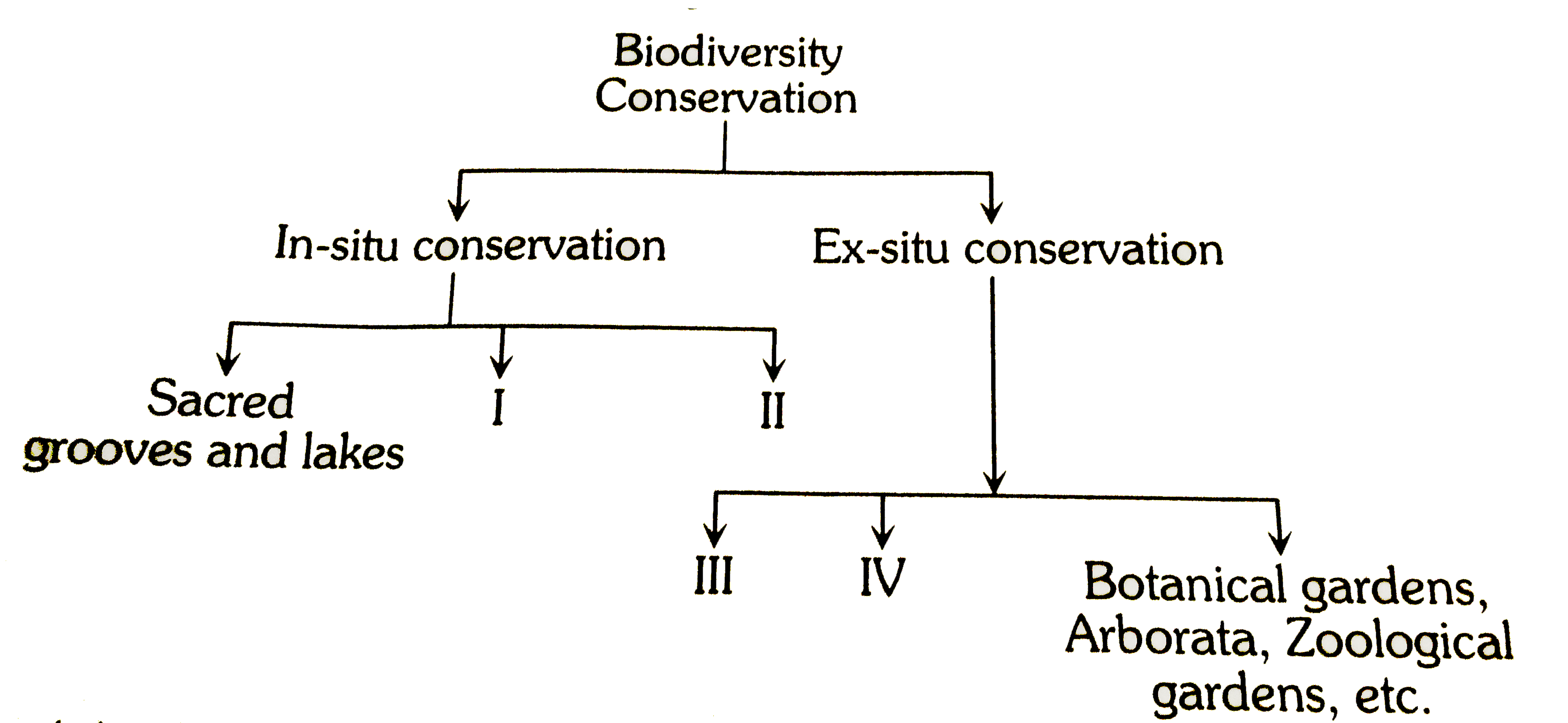Differentiate between in-situ and ex-situ approaches for conserving biodiversity. Give an example for each.
Video Solution
Text Solution
In-situ Conservation– Threatened /endangered plants and animals are provided with urgent measures to save from extinction within their natural habitat and they are protected and allowed to grow naturally.
Example- wildlife sanctuaries/ national parks /bioSQPhere reserves/ sacred groves
Ex-situ Conservation –Threatened animals and plants are taken out from their natural habitat and placed in a setting where they can be protected and given care Example- in botanical gardens/ zoological gardens/ seed/pollen/gene banks
|
Updated on:21/07/2023
Topper's Solved these Questions
- BOOK - XII BOARDS PREVIOUS YEARCHAPTER - SAMPLE PAPER 2019EXERCISE - Section D3videos
SAMPLE PAPER 2019
- BOOK - XII BOARDS PREVIOUS YEARCHAPTER - SAMPLE PAPER 2019EXERCISE - Section E Part A3videos
SAMPLE PAPER 2019
- BOOK - XII BOARDS PREVIOUS YEARCHAPTER - SAMPLE PAPER 2019EXERCISE - Section C Part A2videos
SAMPLE PAPER 2019
- BOOK - XII BOARDS PREVIOUS YEARCHAPTER - QUESTION PAPER 2023EXERCISE - Question51videos
QUESTION PAPER 2023
- BOOK - XII BOARDS PREVIOUS YEARCHAPTER - XII BOARDSEXERCISE - SET- I35videos
XII BOARDS
Similar Questions
Knowledge Check
- Question 1 - Select One
The following is a incomplete flow chart depicting in - situ and ex-situ approaches of conserving biodiversity. Critically study and fill in the blanks I, II, III and IV
 AI - Biosphere reserves, II - National parks and wildlife sanctuaries, III - Sacred plants, Home gardens, IV - Seed banks, field gene banks, cryopreservation, etc.BI - Sacred plants, Home gardens, II - National parks and wildlife sanctuaries, III - Biosphere reserves, IV - Seed banks, field gene banks, cryopreservation, etC.CI - Biosphere reserves, II - Seed banks, field gene banks, cryopreservation, etc., III - Sacred plants, Home gardens, IV - National parks and wildlife sanctuaries.DI - Biosphere reserves, II - Sacred plants, Home gardens, III - National parks and wildlife sanctuaries, IV - Seed-banks, field gene banks, cryopreservation, etc.
AI - Biosphere reserves, II - National parks and wildlife sanctuaries, III - Sacred plants, Home gardens, IV - Seed banks, field gene banks, cryopreservation, etc.BI - Sacred plants, Home gardens, II - National parks and wildlife sanctuaries, III - Biosphere reserves, IV - Seed banks, field gene banks, cryopreservation, etC.CI - Biosphere reserves, II - Seed banks, field gene banks, cryopreservation, etc., III - Sacred plants, Home gardens, IV - National parks and wildlife sanctuaries.DI - Biosphere reserves, II - Sacred plants, Home gardens, III - National parks and wildlife sanctuaries, IV - Seed-banks, field gene banks, cryopreservation, etc. - Question 2 - Select One
The following is a incomplete flow chart depicting in - situ and ex-situ approaches of conserving biodiversity. Critically study and fill in the blanks I, II, III and IV
 AI - Biosphere reserves, II - Sacred plants, Home gardens, III - National parks and wildlife sanctuaries, IV - Seed banks, field gene banks, cryopreservation etcBI - Biosphere reserves, II - Seed banks, field gene banks, cryopreservation, III - Sacred plants, Home gardens, IV - National parks and wildlife sanctuaries etcCI - Sacred plants, Home gardens, II - National parks and wildlife sanctuaries, III - Biosphere reserves, IV - Seed banks, field gene banks, cryoreservation etcDI - Biosphere reserves, II - National parks and wildlife sanctuaries, III - Sacred plants, Home gardens, IV - Seed banks, field gene banks, cryopreservation etc
AI - Biosphere reserves, II - Sacred plants, Home gardens, III - National parks and wildlife sanctuaries, IV - Seed banks, field gene banks, cryopreservation etcBI - Biosphere reserves, II - Seed banks, field gene banks, cryopreservation, III - Sacred plants, Home gardens, IV - National parks and wildlife sanctuaries etcCI - Sacred plants, Home gardens, II - National parks and wildlife sanctuaries, III - Biosphere reserves, IV - Seed banks, field gene banks, cryoreservation etcDI - Biosphere reserves, II - National parks and wildlife sanctuaries, III - Sacred plants, Home gardens, IV - Seed banks, field gene banks, cryopreservation etc - Question 3 - Select One
All are ex-situ measures of conservation except
ANational ParkBZoological ParkCWildlife safariDBotanical gardens
Differentiate between (a) oestrus and menstrual cycles, (b) ovipary and vivipary. Give an example for each type.
View SolutionList six advantages of "ex-situ" approach to conservation of biodiversity.
View SolutionDifferentiate between spontaneous and non - spontaneous processes by giving examples.
View SolutionDifferentiate between injections and leakages. Give two examples of each.
View SolutionDifferentiate between thermoplastic and thermosetting polymers . Give one example of each.
View Solution

